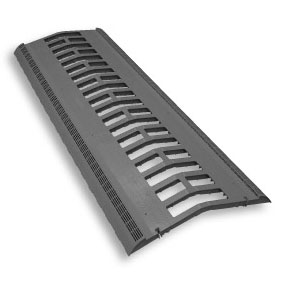
- Duraflo weatherpro turbo review upgrade#
- Duraflo weatherpro turbo review pro#
- Duraflo weatherpro turbo review free#
Take a fan, face it towards another fan, and turn it on. How a does a breeze pull anything but a miniscule amount of air out by venturi effect? just like those little Christmas decorations that use the heat of a candle to spin the angels and ring the bells. Mine turn on hot summer days even when there is no wind. The cost is between $300 to over $1,200 depending on the scope of work.Personally, I just don't get the idea/physics behind turbine vents.since there are no fins or vanes that extend into the attic space. For the best results and for safety reasons, roofing works should be performed from spring to fall, and not during the winter months.
Duraflo weatherpro turbo review upgrade#
To resolve the problems permanently, you may need to upgrade the roof ventilation system. You may notice ice damming and attic rains during the winter months. Can I do a roof ventilation upgrade in the winter? In some cases, an attic inspection is required. And we can provide you with recommendations and a free quote. There is no consultation charge if we can utilize GoogleMaps to figure out what is wrong with your current ventilation. We need to inspect your current system first before we price them out. My home has a bad roof ventilation system. Without a balanced system, moist air can be pulled from the living space, saturates in the narrow attic space, which will promote mold growth and increase the risk of condensation.ĥ.

Before installing ridge vents, a proper intake venting system must be in place. We recommend using a ridge vent system with an air space of at least 1" between the wood sheathing and insulation.
Duraflo weatherpro turbo review free#
The lower the wind speed requirement, the higher the efficiency of the vent.įor maximum efficiency, the net free area ("NFA") of the intake vents should be equal to or greater than the NFA of exhaust vents. High-profile non-powered ventilation designs usually do not require a lot of wind speed. High pressure forces air into the attic, while low pressure draws air out. How do they work?Ī wind-driven flow of air (wind's speed) creates areas of high and low air pressure. Focus on installing a balanced ventilation system first.Ģ. Ridge vents (like other roof vents) will work effectively only when a proper intake venting system is in place. If not, the shingle warranty terms may be void. Shingle manufacturers require that the roof ventilation system meet local building codes. We also carry premium grade metal vents by Ventilation Maximum. Soffit ventilation is located on the underside of the eave. WeatherPro Slantback can be used as intake vents when the soffit ventilation is blocked or nonexistent. Ridge venting is used when the roof slope is shallow and has minimal attic space. Ridge Venting allows smooth airflow over the ridgeline, maximizing effective ventilation from the attic space.

Duraflo weatherpro turbo review pro#
in the net free area and stands tall on the roof. 1 Pro Turbo = 3 Box Vents. WeatherPro Turbo Roof Vent (Tall Vent) has a much larger 117 sq. Standard Roof Vent (Box Vent or Roof Louvers) is installed close to the ridge to ventilate warm air out from the attic space. Roof Ventilation typesĭuraflo offers a selection of vents for Edmonton homeowners. Having sufficient insulation (a rule of thumb is having at least 10 to 12 inches of insulation) and roof ventilation will remove warm, moist air from the attic space, reducing the risk of ice dam formation and attic condensation for most sloped roofs. Pic: ice dams on the eavestrough and the roof edges.

This cycle can result in a pool of water and ice backing up under the shingles and behind the fascia boards. Ice dams also happen when the snow melting/freezing cycle occurs at the eaves and gutters. Pic: condensation around the bathroom vent duct. The most common one is "attic rains" - the melting frost or ice dripping onto insulations and sometimes seeping through ceilings, bathroom fans and light fixtures. The frosted underside of the sheathing causes several problems for Edmonton homeowners. In the winter, warm and moist air rises through the ceiling into the attic and condenses on cold surfaces. Without sound roof ventilation, condensation may appear during the winter months.


 0 kommentar(er)
0 kommentar(er)
